.
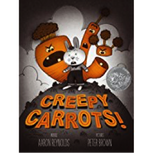
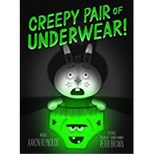
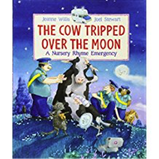
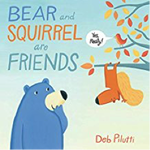
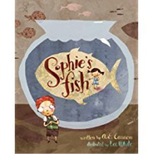
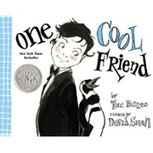
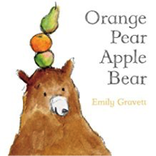
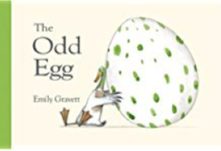
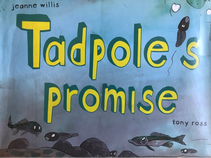
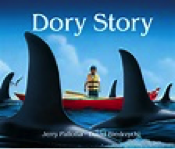
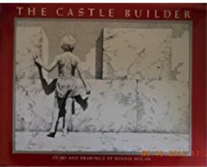
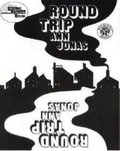
Enjoy!
|
Char Sidell is the K-4 Librarian at Codman Academy in Dorcheste.r . I am sure many of you are familiar with books with surprise endings. In this column, I’d like to try to introduce you to a few more - new books, and some older favorites of mine that may not be so familiar. I have used as one of my criteria for selection over my many years of experience presenting surprise-ending books with children, the books that once shared, never stay on the shelf!  Books in the world of children’s literature often surprise readers with unexpected endings, as does the 2013 Caldecott honor winning Creepy Carrots! by Aaron Reynolds and illustrated by Peter Brown (New York: Simon & Schuster, 2012. ISBN: 978-1-4424-0297-3). Jasper Rabbit loves carrots and has been used to taking them from Crackenhopper Field anytime he wants. But the carrots revolt and begin to follow Jasper until he begins to see creepy carrots everywhere! He becomes really spooked by the carrots, convinced they’re coming for him. He decides to build a high fence with a moat around the carrot patch…if the carrots can’t get out, they can’t get him! And his plan works! But it is the carrots that cheer in the end, “their creepy plan had worked. They were sure of it. Jasper Rabbit would never get into that carrot patch ever again.” Worthy of the Caldecott Honor, the orange carrot characters delight readers from endpapers, title page and right on through the book to the back endpapers. There are many details to be found with each re-reading. The black and grey tones of the book complement the orange carrots and give a menacing feeling adding to the tension in the story. Reynolds and Brown have just created a sequel to Creepy Carrots with their newest book, Creepy Pair of Underwear! (New York: Simon & Shuster, 2017. ISBN 978-1-4424-0298-0). I wondered how Reynolds chose this next topic in his creepy series. In this case, I found my answer in Reynolds’ dedication, “To all the terrific kids at Garland R. Quarles Elementary School in Winchester, Virginia … and especially the one kid who asked for a story about scary underpants.”  The story begins with buying new clothes for back to school. Jasper Rabbit states he is not a little rabbit anymore and his mother indulges Jasper when he begs for a pair of the new green underwear being advertised. He’s thrilled with his new underwear and even wears it to bed that first night. But something’s not right. He tries to get away from their green glow, but he can’t. Ultimately, he takes the underwear to a hill, passing by Crackenhopper Field, and he buries them down a deep hole. When he returns home, he checks everywhere to see if they’ve returned, but they haven’t. Relieved, he goes to bed, without a night light because he’s not a “baby rabbit” anymore. Then there follows a very effective double page black spread. On the next page, two big white eyes appear. Then Jasper’s up, and out of bed. Something’s not right. He gets his shovel and runs to the hill where he’s buried the green underpants, digs them up, and brings them home. He finds all his saved allowance and goes to the department store by himself to buy more green underwear. He wears a pair to bed. Then checks to see if all the other underwear are in their place. He finally sleeps. And the green underwear are now content and happy, too, because they finally find somebody who likes them and isn’t afraid of them! Brown uses an iridescent green for the creepy underpants and it, too, almost becomes a character in the story. The same dark greys and black are used as background throughout creating a scary backdrop for Jasper’s fear of the dark, even though he is NOT a baby rabbit anymore!  The Cow Tripped Over The Moon: A Nursery Rhyme Emergency by Jeanne Willis and Joel Stewart (Somerville, MA: Candlewick Press, 2015. ISBN 978-0-7636-7402-1). This is an imaginative spoof on the disasters that happen within nursery rhymes. “Here comes the ambulance! It’s on its way. Who had an accident in Storyland today?” With bright and action packed illustrations, The Storyland ambulance rushes to help the cow who tripped on the moon, the Rock-a-Bye Baby who fell from a bough, Humpty Dumpty who smashed his shell, Little Boy Blue who fell fast asleep while watching his sheep, and of course, the ambulance arrives and screeches to a stop in order to save the weasel… turn the page, POP! This unexpected surprise ending truly satisfies the readers, young and old! The rhyming repetitive text adds to the enjoyment for younger readers, who can anticipate the action and enjoy the results of words and illustrations that complement each other. This is a great book to share when studying nursery rhymes and fairy tales.  Bear and Squirrel Are Friends by Deb Pilutti (New York: Simon & Shuster, 2015. ISBN 978-1-4814-2913-9) Throughout this book friends of Squirrel are warning him about the dangers of being friends with Bear, because after all, bears eat squirrels. Bear’s friends tell him that Squirrel would make a tasty midnight snack. But the two friends ignore the warnings, declaring that they are good friends, they have a lot in common, they both enjoy blueberries and acorns, and they help each other. When Bear takes his long winter nap, Squirrel patiently waits for him. When spring finally arrives, they view each other a bit differently. Bear says, “You look delicious.” “I mean you look like you would taste delicious.” And they look at each other for a very long time. The tension rises in the next few pages with words like “Gulp”, “I’m sorry, Squirrel, I can’t help myself.” “Excuse me!” showing just Squirrel’s foot going off the page. Bear runs after Squirrel and then “gnaw, nom, chew, munch, crunch, mmm!” A word bubble on the page states, “I’m sorry, Squirrel.” When the reader turns the page, anticipating the worse, Bear is telling Squirrel, “I didn’t leave you any.” But Squirrel doesn’t mind because she can make more blueberry pancakes for Bear who eats every single morsel and blueberry, licking his plate clean. But…he did not eat Squirrel, because “friends don’t eat friends!” The simple illustrations in this book are just enough to leave the reader wondering…  Sophie’s Fish by A.E. Cannon and illustrated by Lee White (New York: Viking, 2012. ISBN 978-0-670-01291-6). Right from the cover, the reader knows something about Jake, the protagonist. He’s timid, apprehensive, a worrier. The soft amber colored illustrations that sometimes appear to be collages add perspective, humor, and delightful details to Jake’s dilemma of whether or not he’ll be able to babysit Sophie’s fish, Yo-Yo, for the weekend. He’s very worried. What kind of snacks do fish like to eat? What kinds of games do fish play? What kinds of stories do they like? Will Yo-Yo cry for Sophie? He’s exhausted thinking about the experience before it even begins! “Who knew babysitting fish would be such hard work?” He convinces himself that he can’t do it and he’ll just tell Sophie to “take Yo-Yo back home. No fish allowed at this house…this house is a fish–free zone.” Then DING-DONG! Sophie’s at the door! “I open the door. Sort of.” Sophie says that Yo-Yo is in her wagon. When she thanks Jake for helping her and Yo-Yo, she beams, and Jake isn’t so worried. “How hard can it be to babysit a fish?” “Babysitting Sophie’s fish will be a snap!” As they walk to the curb, the fishbowl in the wagon is off the page, and when the reader turns to the last page, Jake says, “Or not.”  One Cool Friend by Toni Buzzeo and illustrated by David Small (New York: Dial Books, 2012. ISBN 978-0-8037-3413-5) is an amusing tale that has at its premise the disconnection between adults and children in terms of words and meanings. The sophisticated city characters are exaggerated to make the point, an intellectual father, always with his nose in a book, and his proper well-mannered son named Elliott. This Caldecott Honor book is illustrated with cartoon caricatures and word and thought bubbles, the reader has an inside tract to the miscommunication within the story. Elliot’s father suggests a Family Day at the Aquarium, and while Elliot thinks, “Kids, masses of noisy kids” he replies, “Of course. Thank you for inviting me.” At the Aquarium, Father sits on a bench with his National Geographic while Elliot likes the penguins, especially the Magellanic penguins who are dressed in tuxedos, just like him. When Elliot asks his pre-occupied father if he can have a penguin, his father replies, “Sure, handing him a twenty-dollar bill.” Of course, the assumption is Elliot will buy a stuffed penguin. As they leave the aquarium, Elliot’s father asks where his penguin is and Eliot replies, ”In my backpack.” Back home, Elliot turns down the air conditioner in his room, and drags his wading pool and a hose upstairs. Soon he has a skating pond. When Elliot asks if he can go to the library to do research on Magellan, his father replies, “When I was in third grade, I got Captain Cook.” Magellan lives in the freezer of the icebox, but is unseen by Elliot’s father because Magellan had moved the ice cream to the front of the freezer, blocking him from view. One day, Magellan is in the bathtub, and Father wants to take a soak. “Wait, Elliot says, “I left my penguin in there.” “I’ll set him on the hamper and do my best not to splash.” Suddenly there’s a loud shout, “ELLIOT!” and Elliot rushes to the door. Father asks where the penguin came from and Elliot replies, “The southern tip of Argentina.” “That’s right,” his father says. “As for Captain Cook,” he adds, “he came from the Galapagos Islands”, pointing to his large tortoise on the bathroom floor! This book is for your slightly older audience who will appreciate the humor and wit.  For the younger set, Orange Pear Apple Bear (New York: Simon and Schuster, 2005. ISBN 978-1-4169-3999-3) and Odd Egg by Emily Gravett are real favorites. In Orange Pear Apple Bear, it’s the simple language and one to one correspondence with the illustrations that make this a fun read aloud, even sometimes a tongue twister! The light uncomplicated watercolor illustrations are done in the basic colors of the objects presented in the book – orange, green, yellow, red and brown, introduced along the bottom of the endpapers and onto the title page with bear holding the three fruits in his palm stacked on top of one another. Each fruit is introduced and labeled and then juggled to add interest and test the reader’s verbal agility! The text flows almost musically. The ending is fitting as bear ultimately eats all the fruits, leaving just the peels, and announces “There!” as he walks out of the book!  In Odd Egg (New York: Simon and Schuster, 2008. ISBN 978-1-4169-6872-6), all the birds have laid an egg, all except Duck! But then Duck finds an egg, a large beautiful green speckled egg that he thinks is the most beautiful egg in the world. The other birds taunt and tease him about his odd looking egg. Then… the suspense builds … as all the eggs start to hatch on five shortened pages (similar to the design of Carle’s The Very Hungry Caterpiller) from the smallest egg to the largest. The design and craftsmanship of how this is done is superb as each illustration flips to fit the opposite page seamlessly, introducing each new baby bird to its mother. All the eggs hatch except Duck’s, who waits for several pages knitting away making flipper shaped booties and a scarf … until “CREAK CRACK” …the egg hatches and as the reader turns the page … SNAP goes the alligator eating all the doubters on a double page spread, as Duck looks on. The book continues onto the back endpapers with the alligator following Duck, wearing the knitted booties and scarf, calling … “MAMMA”. This is a very satisfying read in all aspects. The water-colored illustrations are delightful, full of character and expressions that lend themself well in telling this simple, sparsely worded, enjoyable story.  Tadpole’s Promise by Jeanne Willis and illustrated by Tony Ross (New York: Athenaum, 2003. ISBN 0-689-86524-4) is a timely book to read in the spring when tadpoles and caterpillars are part of the curriculum. It’s about changes, and the impossibility of stopping them. But in Tadpole’s Promise, children are presented with the quandary of “what if” when tadpole and caterpillar fall in love and promise each other they will never change. But tadpole grows a tail and legs, breaking his promise twice, and then three times. Caterpillar is heartbroken and crawls up on a branch and cries herself to sleep. She awakens some time later, changed, except for her love of her tadpole. She decides to forgive him and goes to “where the willow meets the water” where frog is sitting on a lily pad. ”Have you seen my shiny black…” and even before she says “pearl”, frog leaps up and swallows her in one gulp. In the end, Frog continues to wait, thinking fondly of his beautiful love and “ wondering where she went.” It raises the hard questions of the animal kingdom and its realities of life. This book is constructed so that you hold the book vertically with the setting of the pond on the pages above and below the gutter. Tony Ross’ whimsical cartoon-like watercolor illustrations fit the story well. An animated discussion is sure to follow!  Dory Story by Jerry Pallota, illus. by David Biedrzycki (Watertown, MA.: Charlesbridge, 2000. ISBN 0-88106-075-5). In first person narrative, Danny recounts what happened when he disobeyed his parents’ warning about going out in the family’s dory alone. With realistic colorful illustrations, the story begins with Danny’s fascination of plankton, tiny sea creatures, not seen at night, but lit up in the moonlight. The next day, the ocean is flat and he decides to take the dory out to the rock in the middle of the bay to explore. There are lots of birds, and he knows from his grandfather that seabirds suggest that there are fish about, so he keeps rowing. He sees hundreds of shrimp swimming, probably eating the plankton he guesses. Then he sees schools of other fish, sand eels, and mackerels. A feeding frenzy ensues when he realizes that bluefish are near his dory, eating the mackerels. As he stands up “in the dory to watch the show the bluefish were putting on”, some large tuna appear and Danny is questioning whether he should have gone out in the dory alone. The tuna are after the bluefish but THEY are almost as long as his dory! Scared, he realizes this is like a food chain, only he doesn’t want to be part of it as he sees killer whales coming into the bay to chase the tuna. Just as he decides to row back to shore a huge humpback whale breaches right in front of him. He knows that humpback whales eat plankton not killer whales, so he decides this is more like a food web than a food chain. Then something happens! One of the tuna that a killer whale is chasing jumps out of the water and smashes into his dory. He capsizes, but luckily he is wearing his lifejacket and is able to swim safely to the rock in the middle of the bay. Just as he reaches safety, he hears his mother’s voice as the reader turns the page, “Danny you tell the best stories when you’re in the bathtub ~ You should write a book.” The illustrations in this book add to its reality. Not only do they help tell the story, the illustrator has illumined the first letter on each page with a snip-it of an illustration from the full page spread, as well as also inserting a small square of the larger illustration, like a puzzle piece, inviting the reader to find both in the full picture. It’s an interesting device that engages the reader as a participant in the story, making it feel more real.  The Castle Builder by Dennis Nolan (New York: Macmillan, 1987. ISBN 0-02-768240-4) is for elementary students who can appreciate the line between fantasy and reality. The artwork for this book is incredibly unique created by hand, dot by dot, using a crow quill pen and black drawing ink and printed the same size as drawn “to ensure dot clarity, resembling grains of sand.” Truly amazing! It is a story of a boy building a sand castle at the beach and role-playing his adventure. “I am Sir Christopher, Builder of Castles” he proclaims. His imagination takes over and then there’s a dragon, and a ship of Black Knights heading towards the castle! Sir Christopher is at the top of the castle shouting, “I am Sir Christopher, Builder of Castles and Tamer of Dragons, and I command you to retreat.” Soon the wind picks up and the waves are lapping at the sand castle, splashing at his feet as he climbs higher to the tower for safety. The tension is real and Sir Christopher’s fate is sure. “Help!” he screams, but he is alone on the top of the tower. Then, suddenly a hand reaches into the story. “Saved just in time”, said the boy, as he lifts a his toy figure from the tower.” Here is a picture of the young boy entering the story and taking a toy boy figure out of the castle. He continues to watch the waves break his castle apart until it disappears. He puts the toy into his bucket, and announces, “Tomorrow I will build an even bigger castle.” as he walks down the beach.  Round Trip (New York: Greenwillow, 1983. ISBN 978-0-688-01772-9) written and illustrated by Ann Jonas continues to delight all ages. Ann Jonas, married to author/illustrator Donald Crews, used her graphic design background to create this black and white illustrated story that takes a family on a trip from the country to the city and back again. The surprise and wonder happen when you finish reading the sparsely written book. “We watched as the sun set. Time to turn around.” Only halfway on their journey, you turn the book over and continue reading the story, using the same illustrations, but now upside-down from the first half. The bridge becomes telephone poles lining the country road, the movie theater becomes a restaurant for dinner. Presenting this book to children is such fun! They are absolutely awe-struck with “how did Ann Jonas do that?!” I needed several copies of this book because it was not only in high demand by newly introduced readers, but revisited for years afterwards by older students. Feedback of all flavors is always appreciated! Perhaps you can share some of YOUR favorite books with surprise endings in the comments and I would be happy to collect your titles and put together a list of them all to share on our MSLA Email List.
Enjoy!
1 Comment
Kim Keith
11/20/2017 08:47:08 am
Great list, love the mix of new books and oldies but goodies. The first school I worked in 24 years ago a third grade teacher used Round Trip every year.
Reply
Your comment will be posted after it is approved.
Leave a Reply. |
Forum NewsletterCo-Editors
|
|
The Massachusetts School Library Association works to ensure every school has a school library program that is fully integrated at all grade levels across the curriculum and has a significant and measurable impact on student achievement….Read more…..and Learn more about MSLA
|
Contact MSLA:
Emily Kristofek, Office Manager/Event Planner P.O. Box 336. Wayland, MA 01778 [email protected] 508-276-1697 |
